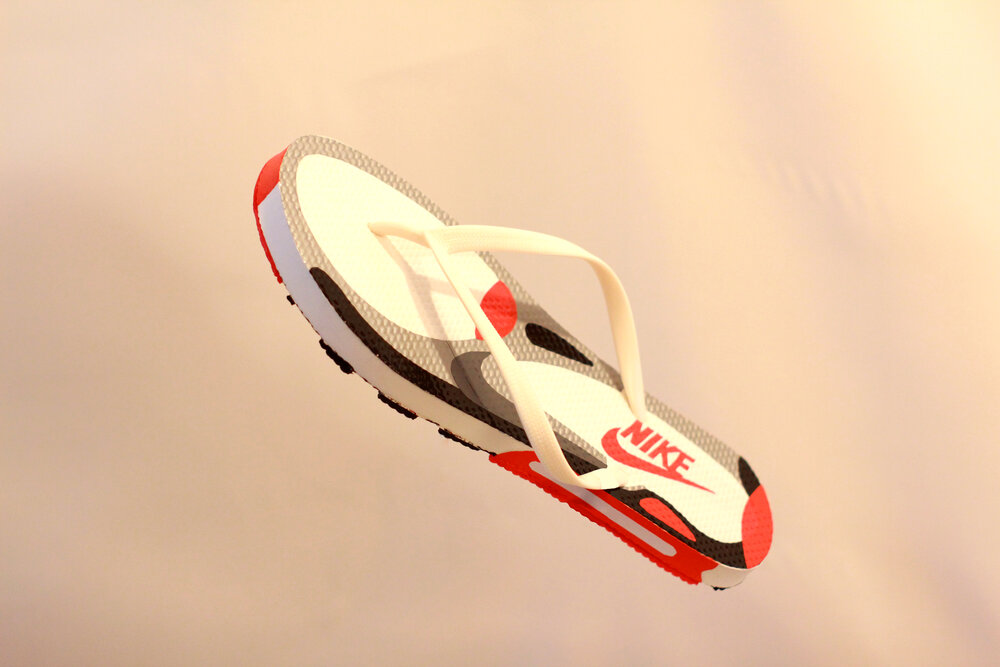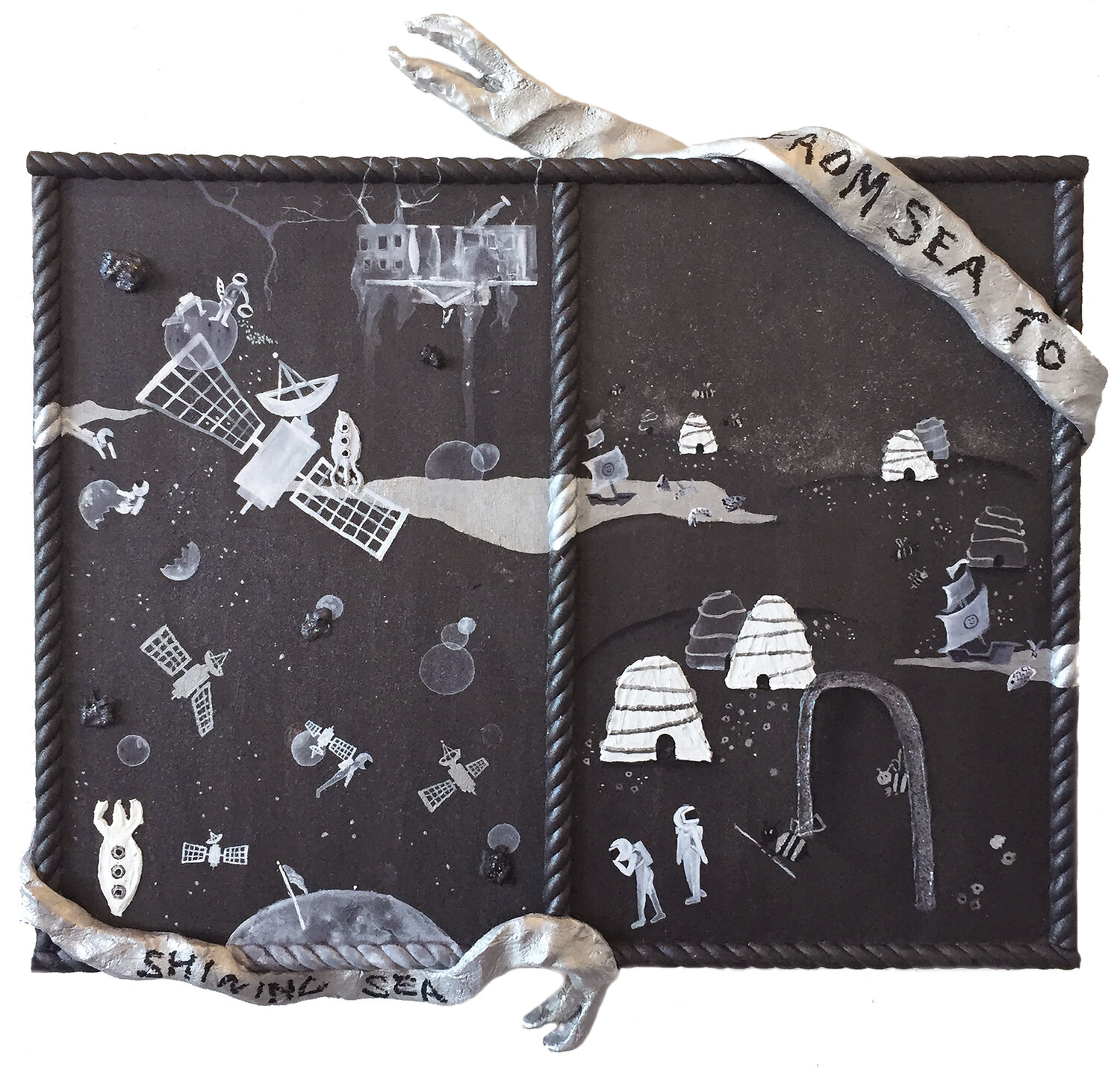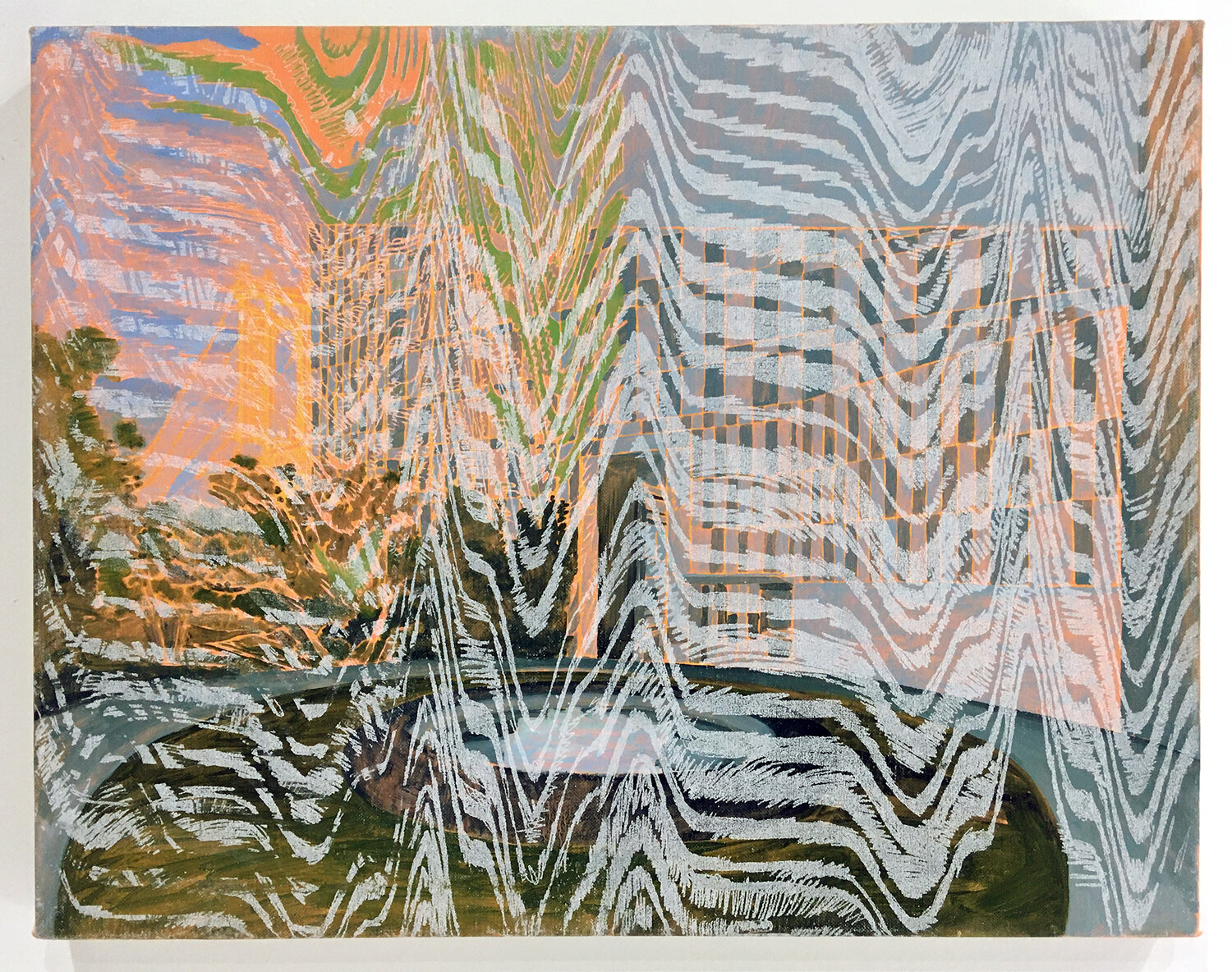Building a Virtual Gallery Show: Case Study with Jip Gallery and Olympia
When we say that the Fractured Atlas team understands the pain of our members who have had to cancel shows and performances because of COVID-19, we mean it. When External Relations Associate Sophia Park isn’t managing grant applications for Fractured Atlas or working on other projects to help our operation run more smoothly, she curates independently and as one half of Jip Gallery. Her summer show was cancelled because of COVID-19.
Jip Gallery, a curatorial collective run by Sophia Park and Michelle Ralph-Fortón “hope[s] to create a space filled with art that allows visitors to gently transport themselves to their imagined homes. [They] strive to lift up voices that are normally not given space in the art world, and work towards a more equitable world through the power of art.”
Sophia Park had been accepted to curate for five weeks over the summer at Chashama. She had planned to curate a show herself, put on events like artist panels with Jip, and find a way to collaborate with Olympia, a curatorial project headed by Ali Rossi. But when the pandemic started shutting down physical events, the opportunity was cancelled.
Driven by a sense of urgency, still full of curatorial energy and connections to artists, Sophia Park decided to build a virtual show in the span of a few weeks. Jip Galley and Olympia reached out to artists they already knew, whose work they liked, and asked them to submit pieces they had already created. The result, “a place to visit,” launched on May 12.
Featuring 21 artists working in photography, video, painting, drawing, sound, and more, “a place to visit” is both an art show and a fundraiser. Each artist chose a COVID-19 relief organization to receive anywhere between 30-100% of their sales profits. Because both Jip Gallery and Olympia tend to use domestic spaces instead of white cube galleries, “a place to visit” is styled like a home, with different pieces in different rooms.
We know that artists, curators, and performers are thinking about how to switch their work to a virtual context, to mention how the shift to virtual shows and performances will change the art world going forward. Jip Gallery and Olympia’s experience is just one example of what virtual shows can look like. They give us an inside look at how they installed work virtually, how they are promoting their show, and how they plan to continue curating upcoming virtual shows.
How did you curate this show?
It was very response-based to pandemic. Think that's a huge part of being in the DIY space in the art world; responding to something in some way. We didn’t really have a vision of what that would look like. We asked anyone who was interested, and then based on that, we started to coordinate like who would go in what room. And initially, our timeline was two weeks and then launch. So that's also why we reached out to artists we've worked with before, because we know their work. We didn’t have to spend extra time thinking about the curatorial framework as much until later in the process, like when we were putting people into rooms. That's really when we had to figure out who goes where.
How did you arrive at spaces in a house as a structuring principle? How did you decide which pieces went in which room?
The house gallery made the most sense because that's something that we all already do when we're able to meet in person. That space provides the ability to take risks with your work and have fun in ways that aren't traditionally accepted in white cube spaces. It was interesting that we brought that structure to the internet because the way that we laid out the show is very clean, and white for the most part. So it has this nice sync between those two ideas.
Sophia had to make some executive decisions, unfortunately, because we were moving so fast in terms of who goes where. And then Ali and Michelle adjusted accordingly. Sophia was [also] doing a lot of the backend building the website work.
Next time, we'll sit down and look through all the work and put folks in rooms in a more collaborative team way.
What did your virtual installation look like?
Part of the challenge that we went through with designing this show and a physical show is that you have to just assume how people are going to interact with it. You can't actually see that happening. So you're trying to create something that's interesting, but also user-friendly.
Normally artists would come into DIY spaces and install their work themselves. But obviously, that can't happen in this space because of security issues like sharing logins, etc. Some people might not have the knowledge to build and put things into a website as artists because most people are used to working with physical objects.
We already talked about social media accessibility best practices as much as possible since that is also another way to experience the show. [But what about virtual accessibility?] What are the ways in which we can use image descriptions to describe an artist's work? Those are the kinds of questions that we have.
We also had to make a lot of assumptions, not just on the curatorial front, but what the artists would like and also what a user would like. Then we did share the website with the artists before. And some artists have a lot to say, some artists have nothing to say.
For the most part, their suggestions were pretty minimal. They were just like, “I don't want my images to be staggered. I want them to be in like a cohesive straight line. This is how you would see it in person.”
We were directed about making our prices transparent to minimize any confusion, and for people to feel comfortable to reach out to comment or buy something.

Ordinarily, you might try to get people to your show by having an opening with cheap wine and the opportunity to people watch and rub elbows. What does it look like to promote a virtual event?
In the beginning, when we launched, we’d never seen such a strong response from people and the artists who are participating, sharing the show and information so much. And then people who appreciate it reposting, commenting, and sharing their feedback. Obviously, that's due to the fact that everyone right now is spending the majority of their time on their phone or on their computer and are engaged with their internet presence. The initial stages of promoting this were very easy, but the tricky part is creating this long lifetime and having people come back and re-engage with it. So that's what we're in the midst of figuring out right now.
We have a series of campaigns through social media that we have planned. We asked artists to answer some questions in a video format. Some people sent in written answers that we'll be releasing over time.
We were trying to be mindful overall of artists’ time and energy. Because we're, you know, it's a pandemic, we can't expect them to behave in a normal way.
We also had a virtual opening. We livestreamed (via Twitch) two DJ sets (both were spinning vinyl!) on our website with two CTA buttons. One led to a "dance floor" on a Zoom line & one led to the rest of the exhibition that folks can check out. Jip has always called our openings "opening parties" instead of receptions because receptions reminded us of another barrier that folks had to climb over to get to the art (e.g. being comfortable schmoozing). And parties are always fun! And I personally love that parties have always had a connection to the art world, and we forget it sometimes nowadays because art has become so stuffy blue-chip.
How has this format opened up new avenues for you as curators? What has a virtual show allowed you to do that you wouldn’t be able to do if you were curating for a physical show?
There are no limitations with space here. You can include any format, any art form, Pretty much any activity that can translate to a website so long as the artist is comfortable. Time is important, too. [This show is] accessible anytime from anywhere so long as you have WiFi (which we acknowledge is a privilege).
Jip’s apartment gallery in Harlem was on the fourth floor and there was no elevator. That was always something that we thought about – how can this be more accessible? We did little videos of the show and posted them on Instagram, but [for this show], that's not an issue.

Manhattan Square Fountain by Georgia McGovern
What are the specific challenges of doing a show virtually?
There are so many things to consider when putting on a show virtually, more than we realized when we started. The first thing is that we have to acknowledge that experiencing art in person is different from online. There are elements like scale, medium, and touch that are really hard to translate across the internet. Another aspect to this is that the art world is still very backwards in the sense that physical shows seem to carry more weight than a virtual show. There’s a certain social capital that you accrue by being physically present at a show.
Another thing is developing an operational pipeline to make sure everything goes smoothly from building the website to conducting sales. We had to figure every part of it out. How to edit on Squarespace, what happens when someone purchases art, how do we deliver art when COVID-19 is hindering this process, etc. If you haven’t done something like this before, there is a steep learning curve.
One last thing is every show we had, our artists would always say that one of the best things through group shows is that they met new artists and made new friends. That’s something we’re struggling to replicate but have some ideas as to how to make it happen. One great thing about being virtual is that our artists who are based in Canada and Germany can join us for a gathering!
How do you think this is going to change curation and programming?
We don't quite know what's going to change. But we hope that virtual shows demonstrate that white cube spaces, institutional spaces, spaces that have the privilege of having a physical space are not the only ways in which artists can show work and be successful and have relationships with the art world.
Spaces that have the money to invest in online platforms will do that, alongside physical shows. Everyone moving forward is going to be concerned that something like this is going to happen again. So making sure that they're prepared for that transition. Valuing the online space just as much, if not more than the physical space – it's going to become our reality.
What's next for Jip and Olympia?
Well, we will keep doing this show. The next round will be in July-ish.
We've already started to gather and reach out to artists that we want to work with in the next round. We always talk about how we make it better and easier. We’ll work on that operationally.
We're two different organizations coming together and bringing different artists. As part of that, there's a lot of communication back and forth. We have to make sure that we are keeping tabs on everything. On our Google Drive, we keep track of sales; what money is going where.
Just kind of tightening our own system process.
All the systems were basically developed in response to things happening. So now that we have this baseline, we can clean it up, simplify it.
But also in terms of the structure of the house, depending on what work we get in this next round, we could change the structure. [We could] think that's something that we're considering. [Or] just change locations completely – who knows?

From Sea to Shining Sea by Anna Berlin
What advice do you have for other curators that are either like that are trying to flip an event to virtual or that are trying to start something virtual?
Always remain flexible and respond to the work that you're showing. We don’t think that it's good to have a very strict idea going in and sticking to that, collecting artists' work that's very much directed to your idea. It's important to always be in a state of responding to what's happening around you.
Sophia frequently says she’s very happy that we get along, because otherwise this could be very difficult. As cliche as it sounds, work with people who you want to work with – artists or curators or larger institutions or whatever.
Challenge yourself to present work in new ways. It's a great opportunity to expand what it means to be a curator and expand what it means to be an arts organization or an exhibiting arts gallery organization.
You can check out “a place to visit” and follow Jip Gallery and Olympia on Instagram to keep up with their work.
If you’re looking for more advice for launching a virtual show or performance, we got some tips from multimedia artist Faith Holland.
About Nina Berman
Nina Berman is an arts industry worker and ceramicist based in New York City, currently working as Associate Director, Communications and Content at Fractured Atlas. She holds an MA in English from Loyola University Chicago. At Fractured Atlas, she shares tips and strategies for navigating the art world, interviews artists, and writes about creating a more equitable arts ecosystem. Before joining Fractured Atlas, she covered the book publishing industry for an audience of publishers at NetGalley. When she's not writing, she's making ceramics at Centerpoint Ceramics in Brooklyn.



